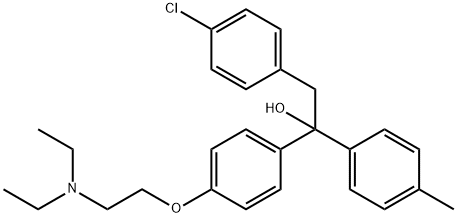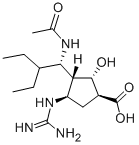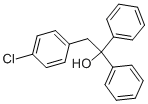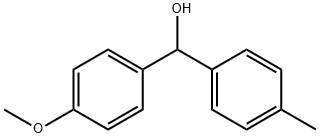TRIPARANOL
- CAS NO.:78-41-1
- Empirical Formula: C27H32ClNO2
- Molecular Weight: 438
- MDL number: MFCD00865748
- EINECS: 201-115-0
- SAFETY DATA SHEET (SDS)
- Update Date: 2024-11-19 15:53:33

What is TRIPARANOL?
Originator
Mer-29,Merrell National,US,1960
The Uses of TRIPARANOL
Triparanol has been used to inhibit cholesterol biosynthesis in lipid rafts1. Triparanol has also been used as a 3β-hydroxysterol-Δ24-reductase inhibitor to study its effect on delayed-rectifier potassium current (Iks) channels2.
The Uses of TRIPARANOL
Desmosterol Delta 24 (D24) reductase inhibitor
What are the applications of Application
Triparanol is a Desmosterol Delta 24 (D24) reductase inhibitor
Definition
ChEBI: Triparanol is a stilbenoid. It has a role as an anticoronaviral agent.
Manufacturing Process
4-(β-diethylaminoethoxy)-4-methylbenzophenone was prepared as follows: a
mixture of 200 g of 4-hydroxy-4-methylbenzophenone, 55 g of powdered
sodium methoxide and 400 ml of ethanol was stirred for 30 minutes. A
solution of 150 g of β-diethylaminoethyl chloride in 300 ml of toluene was
added and the mixture was refluxed four hours. The solvent was removed, the
residue was taken up in ether, extracted with 5% NaOH solution, twice with
water, the ether was removed and the residue was distilled. The product was
obtained as an oil boiling at 232°C at 0.6 mm.
1 liter of a 0.45 N ethereal solution of p-chlorobenzyl magnesium chloride was
added in 30 minutes to a stirred solution of 104 g (0.35 mol) of 4-(β-
diethylaminoethoxy)-4-methylbenzophenone in 400 ml of dry ether. After
stirring an additional hour, the mixture was decomposed by pouring onto 1
liter of cold 10% ammonium chloride solution, the ether solution was washed
with water, and the ether was replaced with hot isopropanol containing a trace
of ammonia. 1-[p-(β-diethylaminoethoxy)phenyl]-1-phenyl-2-p-tolyl-2-p_x0002_chloroethanol separated as white crystals, melting at 104% to 106°C.
Therapeutic Function
Antihyperlipidemic
Biochem/physiol Actions
Triparanol is known to repress Hedgehog signaling in cancer cells and can also inhibit tumor growth3.
Properties of TRIPARANOL
| Melting point: | 102.9-103.7 °C |
| Density | 1.0173 (rough estimate) |
| refractive index | 1.5830 (estimate) |
| storage temp. | 2-8°C |
| solubility | DMSO: 15 mg/mL |
| pka | 13.44±0.29(Predicted) |
| Boiling point: | 235-240 °C(Press: 0.08 Torr) |
| form | solid |
| color | off-white |
Safety information for TRIPARANOL
| Signal word | Danger |
| Pictogram(s) |
 Corrosion Corrosives GHS05  Exclamation Mark Irritant GHS07 |
| GHS Hazard Statements |
H302:Acute toxicity,oral H318:Serious eye damage/eye irritation |
| Precautionary Statement Codes |
P280:Wear protective gloves/protective clothing/eye protection/face protection. |
Computed Descriptors for TRIPARANOL
New Products
Tert-butyl bis(2-chloroethyl)carbamate (S)-3-Aminobutanenitrile hydrochloride N-Boc-D-alaninol N-BOC-D/L-ALANINOL N-octanoyl benzotriazole 4-Hydrazinobenzoic acid 3,4-Dibenzyloxybenzaldehyde Electrolytic Iron Powder 1,1’-CARBONYLDIIMIDAZOLE R-2-BENZYLOXY PROPIONIC ACID 4-HYDROXY BENZYL ALCOHOL 1,1’-CARBONYLDI (1,2-4 TRIAZOLE) S-2-CHLORO PROPIONIC ACID (2-Hydroxyphenyl)acetonitrile 4-Bromopyrazole 5-BROMO-2CYANO PYRIDINE 5,6-Dimethoxyindanone 5-broMo-2-chloro-N-cyclopentylpyriMidin-4-aMine 3-(2,4-Dimethoxybenzyl)dihydropyrimidine-2,4(1H,3H)-dione 6-Bromo-3-iodo-1-methyl-1H-indazole 4-Ethylbenzylamine N-(5-Amino-2-methylphenyl)acetamide 2-(BOC-Amino)4-picoline 1-(4-Methylphenylsulfonyl)-1H-1,2,3-benzotriazoleRelated products of tetrahydrofuran



![[4-[2-(DIMETHYLAMINO)ETHOXY]PHENYL]METHANOL](https://img.chemicalbook.in/CAS/GIF/131028-54-1.gif)




You may like
-
 Triparanol CAS 78-41-1View Details
Triparanol CAS 78-41-1View Details
78-41-1 -
 100-71-0 99%View Details
100-71-0 99%View Details
100-71-0 -
 2 2-BIS(2-HYDROXYETHOXY)-1 1-BINAPHTHYL 99%View Details
2 2-BIS(2-HYDROXYETHOXY)-1 1-BINAPHTHYL 99%View Details
55441-95-7 -
 Chloro Uracil 1820-81-1 99%View Details
Chloro Uracil 1820-81-1 99%View Details
1820-81-1 -
 2-ethyl-6-methyl-3-hydroxypyridine succinate 127464-43-1 99%View Details
2-ethyl-6-methyl-3-hydroxypyridine succinate 127464-43-1 99%View Details
127464-43-1 -
 13162-05-5 N-Vinylformamide 99%View Details
13162-05-5 N-Vinylformamide 99%View Details
13162-05-5 -
 1446013-08-6 98%View Details
1446013-08-6 98%View Details
1446013-08-6 -
 Ste-Glu-AEEA-AEEA-OSUView Details
Ste-Glu-AEEA-AEEA-OSUView Details
1169630-40-3